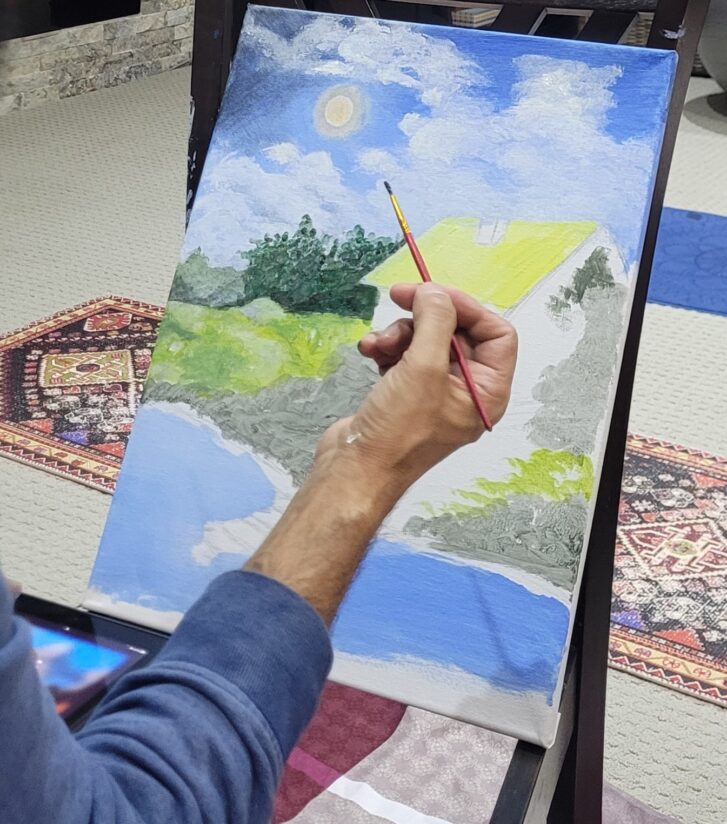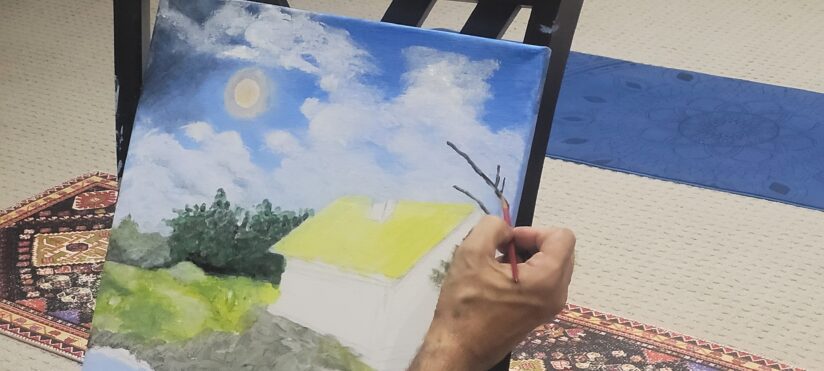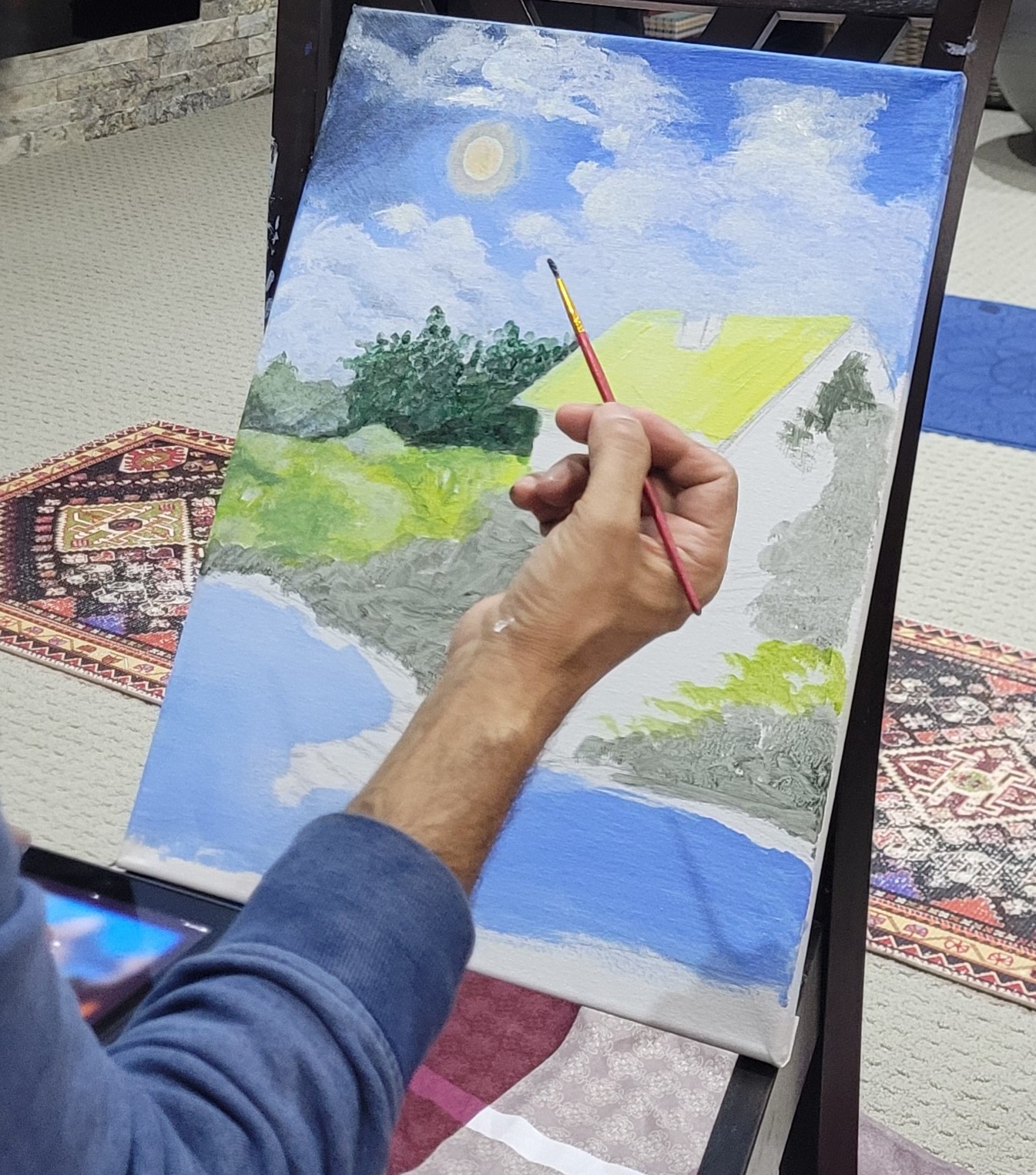Healing Through Creativity
Introduction
In a world where stress and mental health issues are on the rise, finding effective methods of therapy and self-expression is more critical than ever. Art therapy is one such approach that harnesses the power of creativity to promote emotional healing and psychological well-being. It’s a unique and non-verbal form of therapy that enables individuals to explore their inner thoughts and feelings, leading to a deeper understanding of themselves and a path towards healing. This article delves into the world of art therapy, its history, methods, benefits, and answers to frequently asked questions about this intriguing therapeutic approach.
Table of Contents
What is Art Therapy?

Art therapy is a form of psychotherapy that uses the creative process of making art to improve an individual’s physical, mental, and emotional well-being. It provides a safe and supportive space for people to express themselves without the need for words. Art therapists, who are trained professionals, guide clients through this creative journey, helping them explore their thoughts, feelings, and experiences.
The History of Art Therapy
Art therapy has deep roots in human history. From the earliest cave paintings to the intricate drawings of patients in psychiatric hospitals in the 19th century, art has been a means of expression for people across cultures and time periods. However, the formal practice of art therapy as we know it today emerged in the mid-20th century.
One of the pioneers in this field was Adrian Hill, a British artist who discovered the therapeutic potential of art while recovering from tuberculosis. He used his personal experiences to promote art as a healing tool, coining the term “art therapy” in the 1940s. Since then, the field has expanded, with numerous approaches and techniques developed by practitioners worldwide.
How Does Art Therapy Work?
Art therapy involves various creative activities such as painting, drawing, sculpture, and even digital art. Clients are encouraged to choose the medium that resonates with them the most. The process of creating art is accompanied by discussions with the art therapist, making it a dynamic and interactive form of therapy.
Here’s how art therapy typically works:
How Art Therapy Works: A Deeper Dive
Art therapy is a therapeutic process that harnesses the creative power of various art forms, including painting, drawing, sculpture, and even digital art. This creative journey is guided by a trained art therapist, who plays a crucial role in facilitating self-expression and healing.
Here’s a more in-depth look at how art therapy typically unfolds:
1. Assessment:
The art therapy process begins with a thorough assessment by the art therapist. During this initial phase, the therapist engages in dialogue with the client to understand their unique needs, goals, and challenges. This assessment is fundamental to tailoring the art therapy experience to the individual. It helps the therapist gain insight into the client’s emotional landscape and the specific areas that may require attention.
2. Creating Art:
Once the assessment is complete, the client is provided with the freedom to create art in a safe, non-judgmental, and supportive environment. The choice of artistic medium is entirely up to the client, allowing for a highly personalized experience. Some clients may prefer painting, while others may gravitate towards drawing, sculpting, or even digital art. The key here is to select the medium that resonates most with the individual, as this choice often serves as a powerful avenue for self-expression.
3. Exploration:
During the creative process, the client engages in both the act of making art and the exploration of their inner thoughts and emotions. This exploration phase is facilitated by discussions with the art therapist. As the client creates their artwork, they may engage in a dialogue with the therapist, delving into the thoughts, feelings, and the meaning behind the art. These conversations serve as a dynamic and interactive element of art therapy, allowing clients to gain a deeper understanding of their inner world. The artwork itself becomes a powerful mirror reflecting the client’s emotions and thoughts.
4. Processing:
The insights and emotions that surface during the art-making process are not left unattended. The art therapist collaborates with the client to process these revelations. This phase goes beyond simply creating the artwork; it involves analyzing and reflecting on the creative process. By examining their art and discussing their thoughts and emotions with the therapist, clients begin to grasp a deeper understanding of underlying issues. It is during this stage that coping strategies are often developed and refined, providing clients with practical tools to manage their emotional and psychological challenges.
5. Integration:
The final step in art therapy revolves around integrating the newfound self-awareness, coping skills, and insights gained throughout the process into daily life. Clients learn to apply their creative experiences and therapeutic journey to real-life situations. This step is pivotal, as it empowers individuals to carry their growth forward, making lasting changes in their lives based on the self-discovery and healing achieved through art therapy.
In essence, art therapy is a multifaceted and holistic approach that combines the expressive power of art with the guidance of a trained therapist. It offers a safe, supportive, and transformative space for individuals to explore their inner world, understand themselves better, and develop practical tools for improved emotional well-being. The dynamic interplay between creativity and psychology in art therapy provides a unique pathway towards healing and self-discoveryTop of Form.
Benefits of Art Therapy
Art therapy offers a wide range of benefits for individuals dealing with various emotional and psychological issues. Here are some of the key advantages:
1. Self-Expression
Art therapy provides a non-verbal platform for individuals to express complex emotions and thoughts that may be difficult to articulate with words. It allows for a deeper exploration of the self.
2. Stress Reduction
The act of creating art can be inherently calming and meditative, reducing stress and anxiety levels. The process of focusing on the artwork can serve as a mindfulness practice.
3. Emotional Release
Art can be a powerful tool for releasing pent-up emotions. It offers a safe space for individuals to express and process difficult or painful feelings.
4. Self-Exploration
Art therapy encourages self-reflection and introspection. It helps individuals gain insight into their inner world, motivations, and past experiences.
5. Improved Communication
For those who struggle with verbal communication, art therapy can enhance their ability to express themselves. This can be especially beneficial for children and individuals with autism or communication disorders.
6. Increased Self-Esteem
Creating art and discussing it with a trained therapist can boost self-esteem and self-confidence. Clients often gain a sense of accomplishment and pride in their creative abilities.
7. Coping Mechanisms
Art therapy equips individuals with effective coping strategies for dealing with life’s challenges. It teaches them how to manage stress, anxiety, and emotional turmoil in healthy ways.
8. Relationship Building
Art therapy can be used in couples or family therapy to improve communication and strengthen relationships. The collaborative process of creating art can foster understanding and empathy.
Art Therapy in Practice
Art therapy can take various forms, and the choice of medium and techniques often depends on the individual’s preferences and needs. Here are some common approaches to art therapy:
Drawing and Painting

Drawing and painting are versatile forms of art therapy. They allow individuals to express their emotions and thoughts through colors, shapes, and visual storytelling. The act of creating an image can be a powerful way to convey complex feelings that may be challenging to put into words.
Sculpture and Clay Work
Working with clay and sculpting materials provides a tactile and sensory experience. It allows individuals to create three-dimensional representations of their thoughts and emotions. The malleability of clay can be particularly therapeutic, as it enables individuals to shape and reshape their creations, mirroring the process of personal growth and transformation.
Collage
Collage involves assembling images and materials to create a visual composition. It’s a form of art therapy that can be particularly effective for those who have difficulty drawing or painting. The act of selecting and arranging images and materials can reveal deeper insights into one’s feelings and inner world.
Photography

Photography can be a valuable tool for self-expression in art therapy. It allows individuals to capture moments, places, and objects that hold personal significance. Exploring photography as a therapeutic medium can help individuals view the world through a new lens and encourage mindfulness and awareness.
Group Art Therapy
Group art therapy sessions offer the added benefit of social interaction. Participants can share their creations, stories, and experiences with others, fostering a sense of community and support. Group dynamics can enhance the therapeutic process by providing opportunities for empathy and connection.
How to Access Art Therapy
If you’re interested in exploring art therapy, there are several ways to access this form of treatment:
- Private Art Therapists: Many licensed art therapists offer one-on-one sessions tailored to your specific needs and goals.
- Clinical Settings: Art therapy is available in some hospitals, mental health clinics, and rehabilitation centers. It is often integrated into comprehensive treatment programs.
- Community Programs: Some community centers and organizations offer art therapy programs that are open to the public.
- Online Art Therapy: With the advancement of technology, there are also online platforms and resources that offer art therapy sessions and guidance for those who prefer to engage in therapy from the comfort of their own space.
The Transformative Potential of Art Therapy
Art therapy has the power to heal, transform, and empower individuals on their journey towards better mental health and self-discovery. Through the creative process, it offers a unique way to explore one’s emotions, process trauma, reduce stress, and build self-esteem.
The combination of self-expression and professional guidance in art therapy can lead to profound insights and personal growth. Whether you are seeking a therapeutic outlet for emotional challenges or simply looking to enhance your self-awareness and well-being, art therapy is a valuable and creative path to healing.
In the ever-evolving landscape of mental health treatment, art therapy continues to be a beacon of hope and a means of self-discovery for countless individuals. As society increasingly recognizes the importance of holistic approaches to mental well-being, art therapy stands as a testament to the enduring power of creativity and self-expression. It offers a path to healing that is as unique as the individuals who embark upon it, reminding us that art is not only a reflection of life but also a source of profound transformation and healing.
The Evidence Supporting Art Therapy
Art therapy is not just a creative and feel-good activity; it is backed by a growing body of research that demonstrates its effectiveness in promoting mental health and well-being. Studies have shown that art therapy can:
- Reduce symptoms of anxiety and depression.
- Improve self-esteem and self-confidence.
- Enhance emotional resilience and coping skills.
- Aid in processing and healing from trauma.
- Assist individuals in managing chronic pain and illness.
- Support cognitive development, especially in children.
- Foster a sense of empowerment and self-identity.
The research into the therapeutic benefits of art therapy continues to expand, further legitimizing its place in the realm of mental health treatments. This evidence-based approach provides individuals and healthcare professionals with a valuable tool for addressing a wide range of emotional and psychological challenges.
A Personal Journey of Healing
Many individuals who have experienced the transformative power of art therapy can attest to its impact on their lives. Here’s a one of the case in my own counselling sessions helped a person glimpse in healing through art therapy:
Sarah’s Story:
Sarah had always struggled with expressing her emotions verbally. After going through a traumatic experience, she found it even more challenging to communicate her feelings. Traditional talk therapy didn’t provide the relief she was seeking.
Seeking an alternative, Sarah turned to art therapy. Through a series of sessions, she began to paint and draw her emotions. The process allowed her to externalize her pain, anger, and fear onto the canvas. With the guidance of her art therapist, she delved into the symbolism behind her artwork and discovered new insights into her trauma.
Over time, Sarah’s art therapy sessions became a place of solace and healing. Her art therapist encouraged her to explore different mediums and techniques, enabling her to express herself in a variety of ways. As the artwork accumulated, she witnessed her transformation. The vivid colors and bold strokes in her later pieces reflected her growing sense of empowerment and healing.
Sarah’s journey is a testament to the healing power of art therapy. It offered her a means of expression and healing that went beyond words, allowing her to navigate her emotional landscape and find a path to recovery.
Conclusion
Art therapy is a profound and evidence-based approach to mental health and well-being. It offers a creative and therapeutic path to healing, self-discovery, and personal growth. Whether you’re dealing with emotional challenges, seeking self-expression, or simply looking to enhance your overall mental health, art therapy can be a transformative tool on your journey.
As society continues to embrace holistic approaches to mental health, art therapy remains a testament to the enduring power of creativity and self-expression. It serves as a reminder that healing is not solely a clinical process but a deeply personal and creative one. Art therapy is a celebration of the human capacity for transformation, offering a canvas for healing, one brushstroke at a time.
Frequently Asked Questions (FAQs)
1. Who can benefit from art therapy?
Art therapy is a versatile form of therapy that can benefit people of all ages and backgrounds. It is commonly used to address issues such as anxiety, depression, trauma, grief, substance abuse, and relationship problems. Children, adolescents, and adults can all benefit from art therapy.
2. Do I need to be an artist to participate in art therapy?
No, artistic talent is not a prerequisite for art therapy. The focus is on the process and what it means to the individual, rather than the end product. Everyone can engage in art therapy, regardless of their artistic skills.
3. Is art therapy the same as traditional talk therapy?
No, art therapy is distinct from traditional talk therapy. While both aim to improve mental and emotional well-being, art therapy uses creative expression as the primary mode of communication. It can be particularly effective for individuals who find it challenging to express themselves verbally.
4. How long does art therapy typically last?
The duration of art therapy varies from person to person and depends on the specific goals and needs of the individual. Some may benefit from short-term therapy, while others may engage in long-term therapy to address deeper issues.
5. Is art therapy used in clinical settings?
Yes, art therapy is used in a variety of clinical settings, including hospitals, psychiatric facilities, schools, and rehabilitation centers. It is also employed in private practice by licensed art therapists.
6. Can I do art therapy on my own at home?
While engaging in creative activities at home can be therapeutic, it is not a replacement for professional art therapy. The guidance and support of a trained art therapist are crucial for a therapeutic process that addresses specific psychological and emotional needs.
If you’re considering art therapy, don’t hesitate to reach out to a qualified art therapist who can guide you on your journey towards self-discovery and healing.
Also read Holistic Healing Therapy
My website: http://www.positiveworldcounselling.in
My Instagram: https://www.instagram.com/positiveworld2632/
My Facebook: https://www.facebook.com/pwcc38/
My Linkedin: https://in.linkedin.com/in/sarita-saini-31150017


Art therapy is a best medicine to lead a beautiful colourful life.
A person who wants to live a tentionless and pleasure life should adopt art therapy in his/her life.I am very thankful to my Guru Dr.Sarita Saini ji who changed my life with like these therapies.She is God for me.